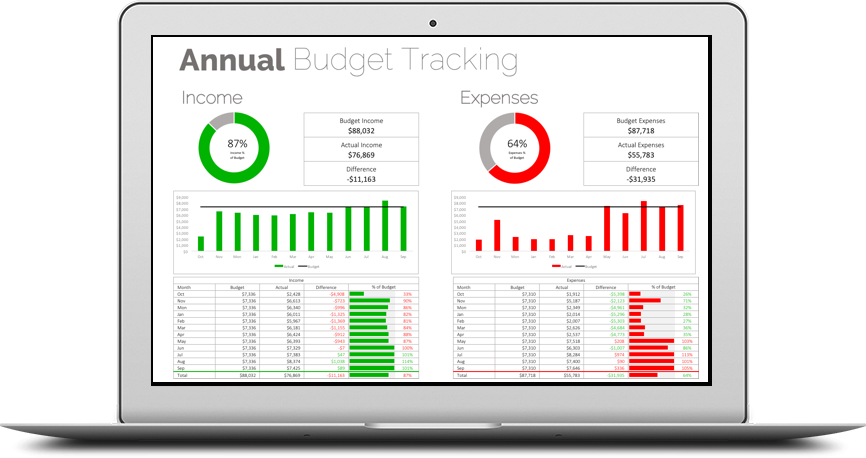Finding Financial Balance
Managing your finances is all about finding balance. There are obvious things you need to balance, like balancing your budget, but finding financial balance goes way beyond that. You need to balance risk vs reward, you need to balance debt vs income, you also need to balance between spending and saving.
Finding the right balance between spending and saving can be tough. The national household savings rate was just 4.3% in the last quarter. That’s quite a bit below the recommended 20% savings rate. Of course, the right balance for you will depend on your unique situation and your unique goals.
It can be very easy to tip to one side or the other. Tipping too far to one side can lead to trouble.
Spending too much is fun today but it jeopardizes your future.
Saving too much might be great for your future but it can make you miserable today.
Finding the right financial balance will ensure you’re happy today AND in the future. Finding the right spending vs saving balance can be difficult, but there are ways to find the right balance.

Spending Too Much:
Spending too much today can jeopardize your future.
Spending too much is a common problem. The average savings rate is only 4.3%. The minimum recommended savings rate is 10%. Most financial planners recommend a savings rate in the 20% range. This is especially important for anyone who needs to save for their own retirement.
In general, you should be saving 20% of your take home income. If it’s less than 20% of your income you may need to revisit your budget.
To get more specific you need to assess your financial goals. Everyone is unique and your goals are too. Determine your financial goals to help you decide how much you need to save.
If you find that you’re spending too much today try using the simple 50/30/20 budget. It’s a great way to manage your spending. It’s simple to set up. It’s easy to manage. Exactly what a budget should be.
Saving Too Much:
Saving too much can make you miserable in the present. Believe it or not, saving too much is a problem for some people.
There are many examples of people saving too much.
Young people can over-estimate how much they need in retirement. They either overestimate their spending in retirement or they underestimate the benefit of government programs.
This leads young people to save more during their 30’s, 40’s and 50’s. And it can come at the expense of fun experiences, vacations or time with family.
Potential retirees can save too much as well. They experience the “one more year” syndrome whereby they work one more year “just to pad the retirement account”. This can happen year after year and lead them to miss out on many retirement experiences.
In both situations people save more for the future, which can be a good thing, but it comes at the expense of living life today.
If you’re saving more than 20% of your take home pay you might be saving too much, it all depends on your financial goals.
Saving too much is usually driven by fear, the fear of running out of money, or the fear of the unknown, but it can also be driven by the lack of financial goals. Having a specific financial goal can help you determine exactly how much you need to save. Then you can put the rest towards spending on fun stuff today.
New blog posts weekly!
Tax planning, benefit optimization, budgeting, family planning, retirement planning and more...

“Finding the right financial balance will ensure that you’re happy today AND in the future.”

Setting Financial Goals:
Setting financial goals is key to finding balance. Someone with a net-income of $60,000/year might choose to save $10,000/year or $30,000/year, it all depends on their goals.
Some major financial goals are to get out of debt, create an emergency fund, save for retirement, own a home, or save for a child’s education.
Planning for these goals will cover most of your savings needs. By planning for these goals you can ensure you’re not saving too much or saving too little.
By planning for these goals you’ll be able to find the right financial balance between spending today and saving for tomorrow.
Join over 250,000 people reading PlanEasy.ca each year. New blog posts weekly!
Tax planning, benefit optimization, budgeting, family planning, retirement planning and more...
Join over 250,000 people reading PlanEasy.ca each year. New blog posts weekly!
Tax planning, benefit optimization, budgeting, family planning, retirement planning and more...





Hi Owen, is there any calculator or apps that help us to do it.
Hi Annie, there are definitely calculators to help you determine how much to save each month to reach your financial goal. Your bank website probably has one of these calculators. The challenge is that you still need to define what your goals are. For some goals like retirement this can be tough. It’s not easy to decide how much you need and when you need it. I’ve got a series of posts coming up about how to determine different financial goals. I hope that will help some people define their own financial goals.
Hi Owen,
Thanks for the guidance. Looking forward for next posts. thanks